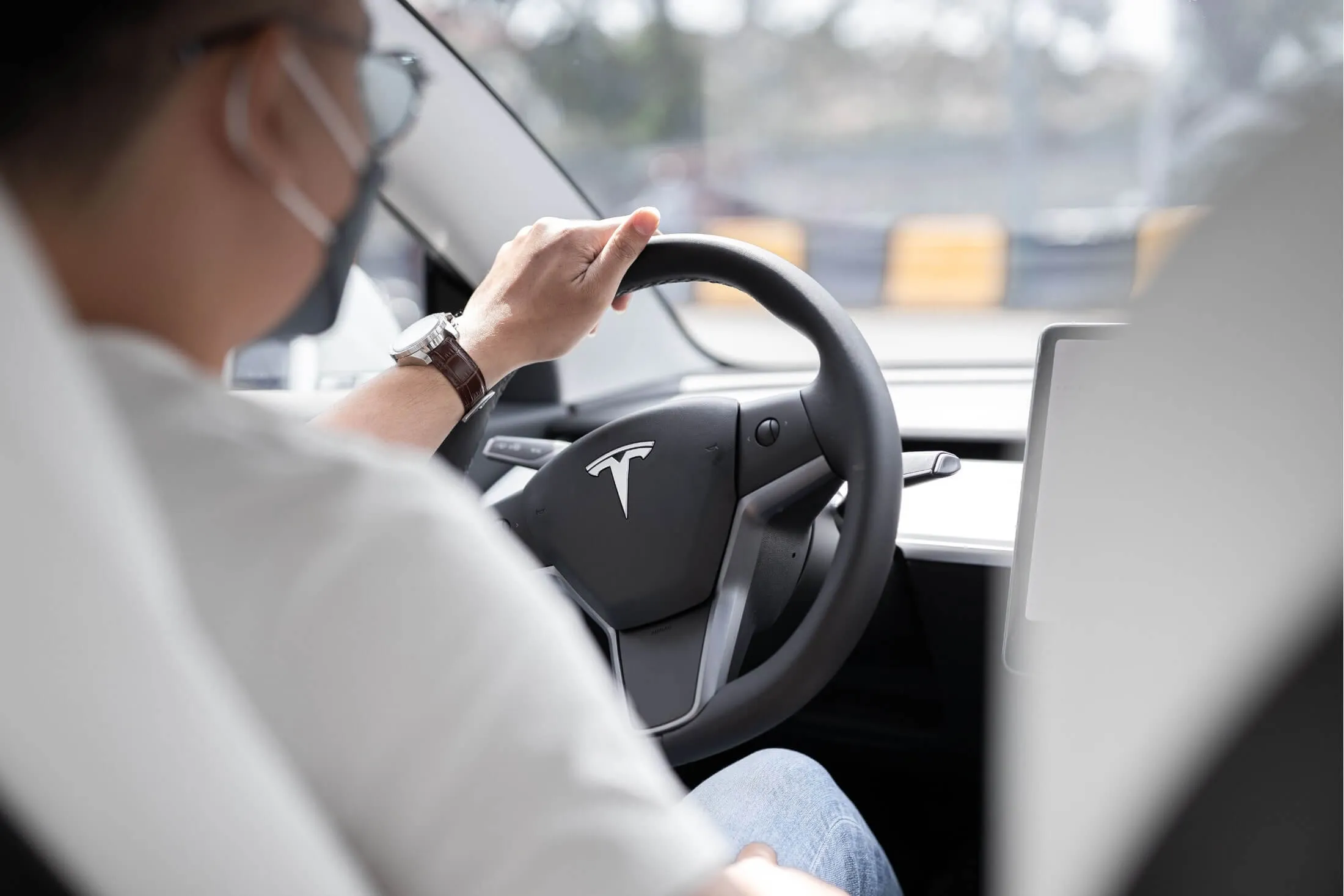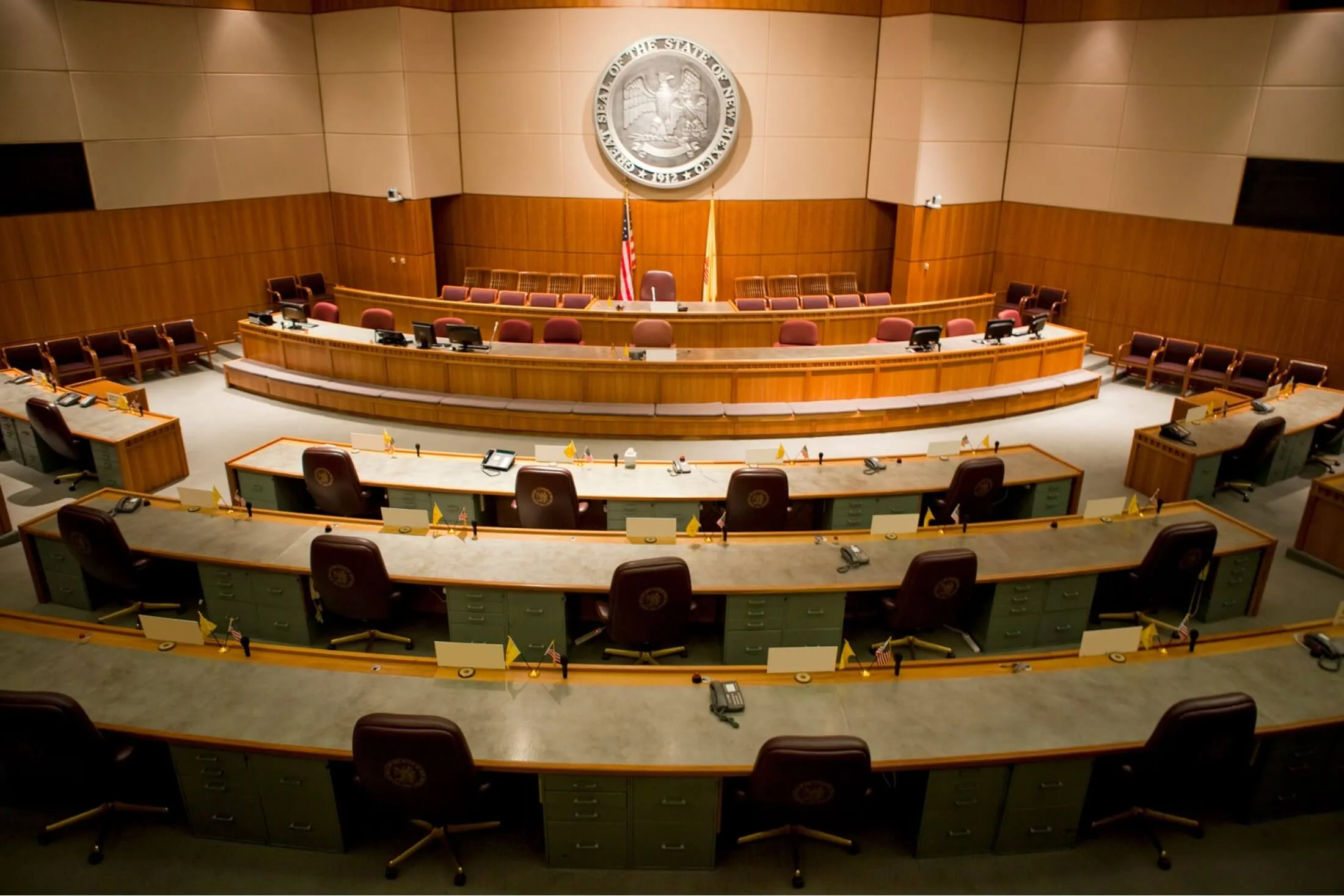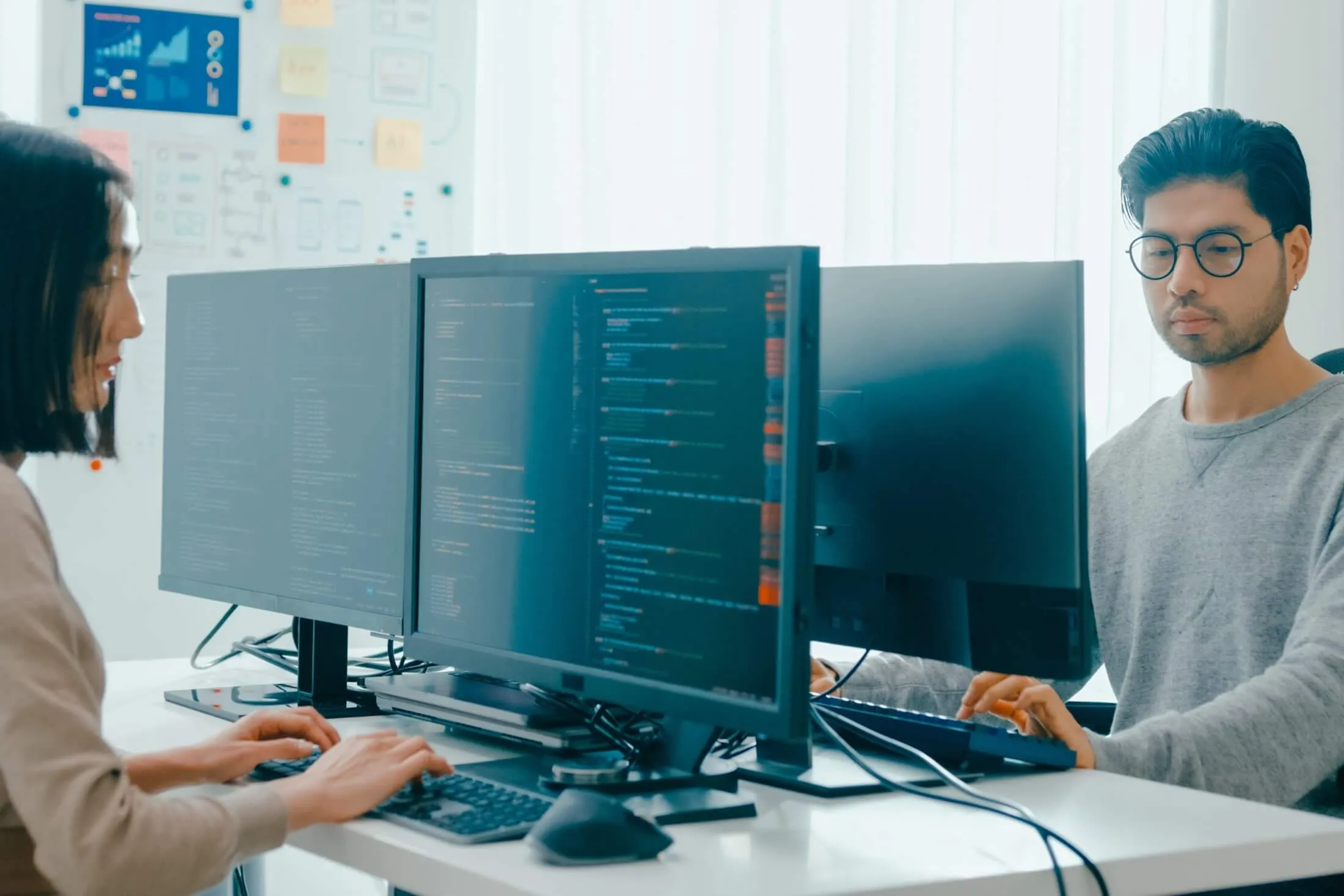Business Technology News Roundup: Oct 03, 2025
Catch up with the key IT and tech news from the US for the week ending October 3, 2025, including major product launches, data breaches, and regulation updates.
The start of October saw a whirlwind of activity in the US tech landscape, with significant developments ranging from new device launches to major cybersecurity events and game-changing policy moves. Last week brought both excitement and urgent reminders about the ever-evolving state of technology in America. Here are the five most important IT headlines that shaped the US sector from September 29 to October 3, 2025.
Stories

Tesla achieved a significant milestone in autonomous vehicle deployment with the launch of its Cybercab beta program, putting 1,000 units on California roads for supervised autonomy evaluations. The rollout represents the largest autonomous vehicle test deployment by a single company in US history, with vehicles operating under Tesla's Full Self-Driving (FSD) software enhanced by the new Grok 5 AI system for real-time edge case handling. The National Highway Traffic Safety Administration (NHTSA) granted approval based on Tesla's extensive safety data showing a 99.95% success rate in controlled environments.
The Cybercab vehicles feature Tesla's most advanced autonomous hardware suite, including the company's custom-designed Full Self-Driving Computer 5.0 (FSD5), which offers 10 times the processing power of previous generations. Each vehicle is equipped with eight surround cameras, 12 ultrasonic sensors, and forward-facing radar, all integrated with Tesla's neural network that has been trained on over 10 billion miles of real-world driving data. The beta program operates under strict supervision protocols, with human safety drivers required to remain alert and ready to intervene at all times.
The economic implications are substantial, with Tesla's ride-hailing app already showing promising internal adoption among Bay Area employees during preliminary testing phases. The company estimates that successful commercialization could generate revenue of $50-100 billion annually within the next decade. California's Department of Motor Vehicles has established specific reporting requirements for the beta program, including monthly safety reports and immediate notification of any incidents. The Cybercab deployment coincides with Tesla's broader autonomous strategy, which includes plans to offer ride-hailing services to individual Tesla owners later in 2025. Industry analysts view this as a crucial test case that could accelerate regulatory approval for fully autonomous commercial operations across the United States. Success in California could pave the way for similar deployments in Texas, Arizona, and other states with favorable autonomous vehicle regulations.

The week witnessed several significant cybersecurity incidents that highlighted ongoing vulnerabilities in both government and private sector digital infrastructure. Most alarming was a breach of a covert messaging application used by US government officials, which exposed unencrypted messages and contact information after a hacker gained access to an AWS-hosted server within just 20 minutes. The compromised system was a customized version of Signal created by Israeli company TeleMessage to meet federal archiving requirements, but investigators discovered that messages intended for secure archiving were being stored in plaintext format.
The government messaging breach revealed the names, message fragments, and .gov email addresses of numerous federal personnel, raising serious questions about the security practices of contractors handling sensitive government communications. TeleMessage has since removed all public documentation about the service and declined to comment on the scope of the breach. Security experts noted that the 20-minute timeframe from initial access to data exfiltration suggests either sophisticated automated tools or significant vulnerabilities in the system's design.
Simultaneously, cybersecurity researchers discovered a massive unprotected database containing over 184 million login credentials tied to major platforms including Google, Apple, Microsoft, Facebook, Instagram, and Snapchat. The database, discovered by researcher Jeremiah Fowler, was accessible without any password protection or encryption, making it one of the largest credential exposures in recent history. Analysis suggests the data originated from infostealer malware campaigns, with many of the credentials being recent and potentially active. Some of the leaked session cookies could allow attackers to bypass two-factor authentication on affected platforms. The database was taken offline after Fowler's report, but the incident underscores the persistent threat posed by credential-stealing malware and the need for improved multi-factor authentication adoption. Security experts emphasized that this breach affects not just individual users but poses significant risks to organizations whose employees may have reused compromised credentials for work accounts.

US lawmakers introduced sweeping legislation that could fundamentally alter how artificial intelligence is regulated at both federal and state levels. Senator Ted Cruz (R-TX) unveiled the SANDBOX Act (S. 2750), which would empower the White House Office of Science and Technology Policy (OSTP) to establish regulatory sandboxes allowing AI companies to operate with two-year exemptions from existing federal regulations. The legislation represents a dramatic shift toward industry-friendly policies, positioning the US to compete more aggressively with China's rapid AI development.
Simultaneously, Representative Michael Baumgartner (R-WA) introduced the American Artificial Intelligence Leadership and Uniformity Act (H.R. 5388), calling for an unprecedented five-year moratorium on most state and local AI regulations. This federal preemption effort aims to create uniform national standards while preventing what supporters describe as a "patchwork of conflicting state laws" that could stifle innovation. The bill specifically targets recent legislation in states like California, which enacted comprehensive AI safety frameworks and neurological data protection laws.
Industry response has been overwhelmingly positive, with major tech companies like Meta, Google, and Microsoft publicly supporting the framework through trade associations like TechNet and NetChoice. However, civil society organizations have raised significant concerns about the legislation potentially creating "liability shields" for AI companies. Data & Society's Policy Director Brian J. Chen warned that the SANDBOX Act could enable companies to "continue to discriminate, spread deepfakes, exacerbate mental health risks and surveil workers" without meaningful oversight. The legislation comes at a critical time, as global AI capital expenditures have exceeded $250 billion quarterly, and various state governments are implementing their own AI governance frameworks. The outcome of these federal initiatives could determine whether the US adopts a centralized, industry-friendly approach to AI regulation or maintains the current system of mixed federal and state oversight.

Apple's iPhone 17 launch dominated consumer technology headlines, with the "Pro Neural" model achieving unprecedented sales figures of over 10 million units within the first 24 hours of preorders. The device represents a quantum leap in mobile AI capabilities, featuring Apple's custom A19 Pro chip capable of processing 50 trillion operations per second (TOPS) entirely on-device. The standout feature is the integration of EEG-enhanced Siri, which uses non-invasive neural interface technology to detect user intent through subtle brainwave patterns, enabling hands-free interaction that goes beyond voice commands.
The Pro Neural model introduces "neural journaling," a feature that analyzes users' emotional states, sleep patterns, and stress levels through a combination of biometric sensors and the device's advanced neural processing unit. This data remains entirely on-device, with Apple emphasizing that no neural data ever leaves the user's iPhone. The device also features upgraded camera systems with 48MP sensors across all lenses and computational photography enhanced by the neural processing capabilities. The thermal management system has been completely redesigned to handle the increased processing demands, incorporating a vapor chamber cooling system previously reserved for professional laptops. Pre-orders exceeded Apple's most optimistic projections, with delivery times extending to 6-8 weeks within hours of launch. The success has had ripple effects throughout the health-tech sector, with companies like Oura seeing their valuations surge by over 40% as investors anticipate increased integration between consumer devices and health monitoring technologies.

OpenAI made headlines with an unprecedented $3 billion hiring initiative aimed at recruiting 1,000 specialized engineers focusing on AI safety and agentic systems development. This massive talent acquisition comes as a strategic response to significant executive departures that have plagued the company throughout 2025, including the loss of several key research directors and safety team leads. The company is specifically targeting professionals from competitors like Anthropic, DeepMind, and various university research labs, offering compensation packages that industry insiders describe as "significantly above market rate."
The announcement coincided with groundbreaking news about OpenAI's "Stargate" project a revolutionary 1-gigawatt nuclear-powered AI facility in rural Nevada, developed in partnership with Oracle. This represents the first nuclear-dedicated AI infrastructure project in the United States, with construction scheduled to begin in Q1 2026. The facility will utilize next-generation small modular reactors (SMRs) to power what OpenAI describes as its "AGI-scale computing infrastructure." Industry analysts estimate the total investment at over $15 billion, making it one of the largest private AI infrastructure projects ever undertaken. The Stargate facility is designed to support models significantly larger than current GPT architectures, with plans for training runs that could require exaflop-scale computing power. This strategic move positions OpenAI to compete directly with Microsoft's Azure infrastructure while reducing dependency on traditional cloud providers.

OpenAI made headlines with an unprecedented $3 billion hiring initiative aimed at recruiting 1,000 specialized engineers focusing on AI safety and agentic systems development. This massive talent acquisition comes as a strategic response to significant executive departures that have plagued the company throughout 2025, including the loss of several key research directors and safety team leads. The company is specifically targeting professionals from competitors like Anthropic, DeepMind, and various university research labs, offering compensation packages that industry insiders describe as "significantly above market rate."
The announcement coincided with groundbreaking news about OpenAI's "Stargate" project a revolutionary 1-gigawatt nuclear-powered AI facility in rural Nevada, developed in partnership with Oracle. This represents the first nuclear-dedicated AI infrastructure project in the United States, with construction scheduled to begin in Q1 2026. The facility will utilize next-generation small modular reactors (SMRs) to power what OpenAI describes as its "AGI-scale computing infrastructure." Industry analysts estimate the total investment at over $15 billion, making it one of the largest private AI infrastructure projects ever undertaken. The Stargate facility is designed to support models significantly larger than current GPT architectures, with plans for training runs that could require exaflop-scale computing power. This strategic move positions OpenAI to compete directly with Microsoft's Azure infrastructure while reducing dependency on traditional cloud providers.

Apple's iPhone 17 launch dominated consumer technology headlines, with the "Pro Neural" model achieving unprecedented sales figures of over 10 million units within the first 24 hours of preorders. The device represents a quantum leap in mobile AI capabilities, featuring Apple's custom A19 Pro chip capable of processing 50 trillion operations per second (TOPS) entirely on-device. The standout feature is the integration of EEG-enhanced Siri, which uses non-invasive neural interface technology to detect user intent through subtle brainwave patterns, enabling hands-free interaction that goes beyond voice commands.
The Pro Neural model introduces "neural journaling," a feature that analyzes users' emotional states, sleep patterns, and stress levels through a combination of biometric sensors and the device's advanced neural processing unit. This data remains entirely on-device, with Apple emphasizing that no neural data ever leaves the user's iPhone. The device also features upgraded camera systems with 48MP sensors across all lenses and computational photography enhanced by the neural processing capabilities. The thermal management system has been completely redesigned to handle the increased processing demands, incorporating a vapor chamber cooling system previously reserved for professional laptops. Pre-orders exceeded Apple's most optimistic projections, with delivery times extending to 6-8 weeks within hours of launch. The success has had ripple effects throughout the health-tech sector, with companies like Oura seeing their valuations surge by over 40% as investors anticipate increased integration between consumer devices and health monitoring technologies.

US lawmakers introduced sweeping legislation that could fundamentally alter how artificial intelligence is regulated at both federal and state levels. Senator Ted Cruz (R-TX) unveiled the SANDBOX Act (S. 2750), which would empower the White House Office of Science and Technology Policy (OSTP) to establish regulatory sandboxes allowing AI companies to operate with two-year exemptions from existing federal regulations. The legislation represents a dramatic shift toward industry-friendly policies, positioning the US to compete more aggressively with China's rapid AI development.
Simultaneously, Representative Michael Baumgartner (R-WA) introduced the American Artificial Intelligence Leadership and Uniformity Act (H.R. 5388), calling for an unprecedented five-year moratorium on most state and local AI regulations. This federal preemption effort aims to create uniform national standards while preventing what supporters describe as a "patchwork of conflicting state laws" that could stifle innovation. The bill specifically targets recent legislation in states like California, which enacted comprehensive AI safety frameworks and neurological data protection laws.
Industry response has been overwhelmingly positive, with major tech companies like Meta, Google, and Microsoft publicly supporting the framework through trade associations like TechNet and NetChoice. However, civil society organizations have raised significant concerns about the legislation potentially creating "liability shields" for AI companies. Data & Society's Policy Director Brian J. Chen warned that the SANDBOX Act could enable companies to "continue to discriminate, spread deepfakes, exacerbate mental health risks and surveil workers" without meaningful oversight. The legislation comes at a critical time, as global AI capital expenditures have exceeded $250 billion quarterly, and various state governments are implementing their own AI governance frameworks. The outcome of these federal initiatives could determine whether the US adopts a centralized, industry-friendly approach to AI regulation or maintains the current system of mixed federal and state oversight.

The week witnessed several significant cybersecurity incidents that highlighted ongoing vulnerabilities in both government and private sector digital infrastructure. Most alarming was a breach of a covert messaging application used by US government officials, which exposed unencrypted messages and contact information after a hacker gained access to an AWS-hosted server within just 20 minutes. The compromised system was a customized version of Signal created by Israeli company TeleMessage to meet federal archiving requirements, but investigators discovered that messages intended for secure archiving were being stored in plaintext format.
The government messaging breach revealed the names, message fragments, and .gov email addresses of numerous federal personnel, raising serious questions about the security practices of contractors handling sensitive government communications. TeleMessage has since removed all public documentation about the service and declined to comment on the scope of the breach. Security experts noted that the 20-minute timeframe from initial access to data exfiltration suggests either sophisticated automated tools or significant vulnerabilities in the system's design.
Simultaneously, cybersecurity researchers discovered a massive unprotected database containing over 184 million login credentials tied to major platforms including Google, Apple, Microsoft, Facebook, Instagram, and Snapchat. The database, discovered by researcher Jeremiah Fowler, was accessible without any password protection or encryption, making it one of the largest credential exposures in recent history. Analysis suggests the data originated from infostealer malware campaigns, with many of the credentials being recent and potentially active. Some of the leaked session cookies could allow attackers to bypass two-factor authentication on affected platforms. The database was taken offline after Fowler's report, but the incident underscores the persistent threat posed by credential-stealing malware and the need for improved multi-factor authentication adoption. Security experts emphasized that this breach affects not just individual users but poses significant risks to organizations whose employees may have reused compromised credentials for work accounts.

Tesla achieved a significant milestone in autonomous vehicle deployment with the launch of its Cybercab beta program, putting 1,000 units on California roads for supervised autonomy evaluations. The rollout represents the largest autonomous vehicle test deployment by a single company in US history, with vehicles operating under Tesla's Full Self-Driving (FSD) software enhanced by the new Grok 5 AI system for real-time edge case handling. The National Highway Traffic Safety Administration (NHTSA) granted approval based on Tesla's extensive safety data showing a 99.95% success rate in controlled environments.
The Cybercab vehicles feature Tesla's most advanced autonomous hardware suite, including the company's custom-designed Full Self-Driving Computer 5.0 (FSD5), which offers 10 times the processing power of previous generations. Each vehicle is equipped with eight surround cameras, 12 ultrasonic sensors, and forward-facing radar, all integrated with Tesla's neural network that has been trained on over 10 billion miles of real-world driving data. The beta program operates under strict supervision protocols, with human safety drivers required to remain alert and ready to intervene at all times.
The economic implications are substantial, with Tesla's ride-hailing app already showing promising internal adoption among Bay Area employees during preliminary testing phases. The company estimates that successful commercialization could generate revenue of $50-100 billion annually within the next decade. California's Department of Motor Vehicles has established specific reporting requirements for the beta program, including monthly safety reports and immediate notification of any incidents. The Cybercab deployment coincides with Tesla's broader autonomous strategy, which includes plans to offer ride-hailing services to individual Tesla owners later in 2025. Industry analysts view this as a crucial test case that could accelerate regulatory approval for fully autonomous commercial operations across the United States. Success in California could pave the way for similar deployments in Texas, Arizona, and other states with favorable autonomous vehicle regulations.
Stay connected for next week’s highlights as we continue to track the most impactful stories at the intersection of business and technology.
Stay Connected: Follow NDIT Solutions on LinkedIn, for more insights and updates.
Need Expert IT Guidance? Our team of experienced consultants is here to help your business navigate the complex world of IT. Contact us today at info@nditsolutions.com or call 877-613-8787 to learn how we can support your technology needs.
See you next week for another round of essential IT news!

.webp)






